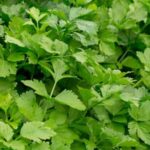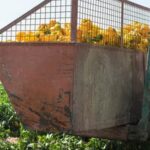If you are an avid gardener or looking to start your own vegetable garden, then implementing a drip system can be a game-changer. A vegetable garden drip system is an efficient method of watering plants by delivering water directly to the root zone. In this article, we will delve into the world of drip systems for vegetable gardens, exploring their benefits, types, design, installation, maintenance, and tips for maximizing efficiency.
Drip systems offer numerous advantages for vegetable gardens, such as water conservation, reduced weed growth, and healthier plants. We will discuss the many benefits in detail and how they can significantly improve the overall health and yield of your vegetable garden.
In addition to discussing the benefits of using drip systems in vegetable gardens, we will also explore the different types available. From soaker hoses to micro-irrigation systems, we will provide an overview of each type and help you determine which one may work best for your specific garden needs. Stay tuned as we guide you through the entire process of integrating drip systems into your vegetable garden for optimal results.
Benefits of Using Drip Systems for Vegetable Gardens
Using drip systems for vegetable gardens offers numerous benefits that make it a popular choice among gardeners. One of the main advantages is its efficiency in water usage, as it delivers water directly to the roots of plants, minimizing evaporation and water waste. By providing a consistent moisture level, drip systems help in preventing overwatering or underwatering, which can be detrimental to the health and growth of vegetables.
Furthermore, drip systems also promote better plant health by reducing the risk of diseases such as powdery mildew, which can occur when foliage gets wet from overhead watering methods. This can result in healthier and more vibrant vegetables, ultimately leading to a more bountiful harvest.
Another key benefit of using drip systems in vegetable gardens is the conservation of time and energy. Once installed and set up properly, these systems require minimal effort to operate and maintain. With automated timers and programmable controllers, gardeners can ensure that their vegetable plants receive the right amount of water at the right time without the need for manual watering.
In addition to these benefits, using drip systems for vegetable gardens can also lead to cost savings in the long run. While there may be an initial investment in purchasing and installing the system, it pays off through reduced water usage and lower utility bills. Overall, the convenience, efficiency, and effectiveness of drip systems make them a valuable asset for any vegetable garden.
Different Types of Drip Systems for Vegetable Gardens
When it comes to choosing a drip system for your vegetable garden, there are several options to consider. Each type of system has its own advantages and drawbacks, so it’s important to weigh the pros and cons before making a decision.
One common type of drip system is the soaker hose, which is a porous hose that allows water to seep out slowly and evenly along its length. This can be a cost-effective option for small vegetable gardens, as it is easy to install and requires minimal maintenance. However, soaker hoses may not be the best choice for larger gardens or for plants that require precise watering.
Another popular choice is the micro-spray system, which uses small emitters to distribute water in a fine mist or spray. This type of system is ideal for covering large areas and can be customized to deliver different amounts of water to different parts of the garden. However, micro-spray systems can be more prone to clogging and may require more frequent maintenance than other types of drip systems.
Lastly, drip irrigation systems use a network of tubes and emitters to deliver water directly to the base of each plant. This type of system provides precise control over watering and can be very efficient in terms of water usage. Drip irrigation systems are also highly customizable and can be automated with timers or sensors for added convenience.
In summary, when choosing a drip system for your vegetable garden, it’s important to consider factors such as garden size, plant type, and budget. Each type of system offers unique benefits and challenges, so take the time to research and plan accordingly before making a decision.
| Type | Advantages | Disadvantages |
|---|---|---|
| Soaker Hose | Cost-effective; easy installation | May not be suitable for larger gardens |
| Micro-Spray System | Ideal for large areas; customizable | Potential clogging; higher maintenance |
| Drip Irrigation System | Precise control; efficient water usage; automatable | Higher initial investment; more complex setup |
How to Design and Plan a Drip System for Your Vegetable Garden
Designing and planning a drip system for your vegetable garden is an essential step in ensuring the success of your garden. There are several key factors to consider when creating a drip system, including the layout of your garden, the types of vegetables you are growing, and the water source available.
First, take the time to carefully map out the layout of your garden and determine where you will place your drip lines. Consider the specific water needs of each type of vegetable you are growing, as well as any areas of your garden that may have different watering requirements. This will help you determine how many drip lines you will need and where they should be placed for maximum efficiency.
Next, select the appropriate components for your drip system, including tubing, emitters, connectors, and filters. It’s important to choose high-quality materials that are suitable for use in vegetable gardens and that will provide consistent and reliable water distribution. Additionally, consider incorporating a timer or irrigation controller into your system to automate watering schedules and ensure that your vegetables receive the right amount of water at the right time.
When planning your drip system, also take into account the water source available to you. Whether you are using a traditional faucet or rainwater collection system, you’ll need to design your drip system to accommodate this water source and ensure proper filtration and pressure regulation.
By carefully designing and planning your drip system for your vegetable garden, you can create an efficient and effective watering solution that promotes healthy growth and maximum yield for your vegetables.
| Factors to Consider | Considerations |
|---|---|
| Garden Layout | Determine where to place drip lines based on different water needs |
| Component Selection | Select high-quality materials suitable for use in vegetable gardens |
| Water Source | Design system to accommodate available water source with proper filtration and pressure regulation |
Installation and Setup of Drip Systems for Vegetable Gardens
Installing and setting up a drip system for your vegetable garden is a cost-effective and efficient way to ensure that your plants receive the right amount of water at the right time. Whether you are a beginner or an experienced gardener, here are some steps to consider when installing and setting up your vegetable garden’s drip system:
1. Choose the Right Components: When setting up a drip system for your vegetable garden, it is essential to choose the right components to meet the specific needs of your plants. This includes selecting the appropriate tubing, emitters, filters, and valves that will work effectively within your garden space.
2. Create a Layout Plan: Before installing the drip system, it is important to create a layout plan for how the tubing will be arranged around your plants. Consider the spacing between each emitter and how they will deliver water to each plant.
3. Install the Drip Irrigation System: Once you have planned out the layout, begin by laying out the tubing in accordance with your design. Connect all necessary components such as filters, pressure regulators, and emitters as per manufacturer instructions.
Following these steps will lead to an efficient setup that maximizes water delivery while minimizing waste in your vegetable garden. With proper installation and setup of a drip irrigation system in place, you can ensure that your plants receive consistent watering for optimal growth and yield.
Maintenance and Troubleshooting of Drip Systems in Vegetable Gardens
Regular Maintenance for Drip Systems
Maintaining a drip system for your vegetable garden is essential to ensure its efficiency and longevity. Regular maintenance tasks include checking for clogged emitters, repairing leaks in the system, and adjusting the water pressure as needed. It’s also important to monitor the overall performance of the system, including the distribution of water to the plants.
Troubleshooting Common Issues
Despite regular maintenance, drip systems may encounter issues from time to time. Common problems include uneven water distribution, clogged filters, or damaged tubing. When troubleshooting these issues, it’s crucial to identify the root cause before making any adjustments. By understanding how each component of the system works together, you can effectively troubleshoot and resolve any issues that arise.
Seasonal Considerations
As the seasons change, so do the needs of your vegetable garden and its drip system. During hotter months, you may need to increase watering frequency, while during cooler months, you may need to minimize watering to prevent overwatering. Regularly evaluating and adjusting your drip system according to seasonal changes will help maintain optimal growing conditions for your vegetables.
By routinely maintaining and effectively troubleshooting your vegetable garden’s drip system, you can ensure that it continues to provide efficient watering for years to come.
Tips for Maximizing the Efficiency of Drip Systems in Vegetable Gardens
When it comes to maximizing the efficiency of drip systems in vegetable gardens, there are several tips and strategies to keep in mind. By implementing these best practices, gardeners can ensure that their drip systems are functioning at their best, delivering water precisely where it’s needed and helping to promote healthy, thriving plants.
Here are some tips for maximizing the efficiency of drip systems in vegetable gardens:
- Regular Inspections: It is important to regularly inspect your drip system for any leaks, clogs, or damaged components. Check for missing or broken emitters, cracks in the tubing, and any signs of water pooling where it shouldn’t be. By catching and addressing these issues early on, you can prevent water waste and ensure that your plants receive the proper amount of water.
- Proper Timing: Consider the timing and duration of your drip system irrigation. Adjusting the schedule based on weather conditions and plant needs can help prevent overwatering or underwatering. In hot weather, you may need to increase watering frequency, while in cooler or rainy conditions, you may need to reduce it.
- Mulching: Applying a layer of organic mulch around your vegetable plants can help maximize the efficiency of your drip system. Mulch helps retain moisture in the soil, reduces evaporation, and can also help prevent weed growth. This means that your drip system doesn’t have to work as hard to keep the soil moist.
By implementing these tips and strategies, vegetable gardeners can ensure that their drip systems function at their best, delivering water efficiently and effectively to their plants. With regular inspections, proper timing adjustments, and the use of mulch, gardeners can make the most out of their drip systems while promoting a healthy growing environment for their vegetables.
Case Studies and Success Stories of Vegetable Gardens Using Drip Systems
Increased Yield and Water Efficiency
Many vegetable gardeners have reported significant increases in their yield after implementing drip systems. By providing water directly to the root zone of plants, drip systems ensure that each plant receives the precise amount of water it needs, leading to healthier and more productive crops. In addition to higher yields, many gardeners have also experienced improved water efficiency. Drip systems minimize water wastage by delivering water directly to the plants, reducing evaporation and runoff.
Healthier Plants and Reduced Disease
Drip systems have been credited with promoting healthier plants in vegetable gardens. By maintaining consistent moisture levels in the soil, these systems help prevent overwatering or underwatering, which can stress plants and make them more susceptible to diseases. With drip irrigation, the foliage of the plants remains dry, further reducing the risk of fungal diseases that thrive in wet conditions. As a result, many gardeners using drip systems have reported reduced incidence of plant diseases, resulting in overall healthier crops.
Time and Labor Savings
Another common success story among vegetable gardeners using drip systems is the time and labor savings they experience. Unlike traditional watering methods such as hand watering or sprinklers, drip systems are automated and can be set on timers.
This means that gardeners no longer need to spend time manually watering their plants, allowing them to redirect their efforts towards other aspects of gardening. The automation provided by drip systems also ensures that plants receive consistent care even when gardeners are away from home for extended periods.
Conclusion
In conclusion, the future of drip systems in vegetable gardens looks promising. As more and more people become interested in sustainable and efficient gardening practices, the demand for drip irrigation systems is expected to rise. With the numerous benefits that drip systems offer, such as water conservation, reduced weed growth, and healthier plants, it’s no wonder why they are becoming increasingly popular among vegetable gardeners.
One of the key factors contributing to the future success of drip systems in vegetable gardens is their adaptability. There are many different types of drip systems available, allowing gardeners to choose the one that best fits their individual needs and preferences. From simple DIY setups to more complex automated systems, there is a solution for every type of vegetable garden.
As technology continues to advance, so too will the efficiency and effectiveness of drip systems in vegetable gardens. Innovations in irrigation technology will likely lead to even greater water savings and improved plant health in the future.
Additionally, as more case studies and success stories emerge showcasing the benefits of using drip systems in vegetable gardens, it’s likely that even more gardeners will be inspired to make the switch. As we look ahead, it’s evident that drip systems will play an increasingly important role in sustainable and productive vegetable gardening practices.
Frequently Asked Questions
What Is the Best Irrigation System for a Vegetable Garden?
The best irrigation system for a vegetable garden depends on various factors such as the size of the garden, the types of vegetables being grown, and the local climate. Drip irrigation is a popular choice for its efficiency in delivering water directly to the plant roots.
Is Drip Irrigation Good for Vegetables?
Drip irrigation is indeed good for vegetables because it provides targeted watering to the plants’ roots, reducing water waste and minimizing the risk of diseases caused by moisture on foliage. It also allows for more precise control over the amount of water each plant receives.
What Is the 30 30 Rule for Drip Irrigation?
The 30 30 rule for drip irrigation suggests running a drip system for 30 minutes and then waiting 30 minutes before starting another cycle. This approach prevents water from accumulating and ensures proper absorption by the soil without causing runoff or water wastage.

If you’re looking to get into vegetable gardening, or are just looking for some tips on how to make your current garden better, then you’ve come to the right place! My name is Ethel and I have been gardening for years. In this blog, I’m going to share with you some of my best tips on how to create a successful vegetable garden.





